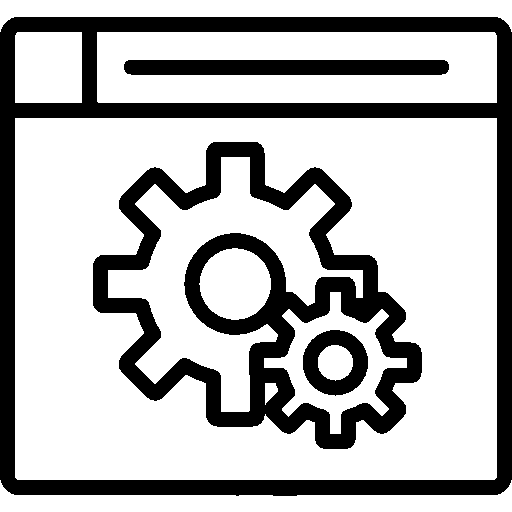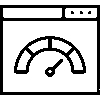Projects - Settings
-
General Settings
Settings are customized by selecting the settings to be used according to the company's preference from the General Settings menu.
The color of the application is saved by selecting the preferred color.
The application can be separated according to my companies.
Default Company is selected (Verisay) / All records are saved to the default company.
If the company has more than one branch, division by branch is used.
The product list is managed using the Project Items feature.
The stage of the project is determined in two items.
-Status Feature is available.
-Deadline Date can be entered according to Stage.
Projects can be separated according to Customer Representatives.
-Enables each representative to see their own customers' projects.
Projects can be separated by Sales Representatives.
-Enables each representative to see their own customers' projects.
These are customer projects
-Allows you to add customer information to the project.
Role definition is used.
-Enables role definition to project members.
Project Components are authorized on a Role Basis.
Using the Category Feature, projects can be managed by dividing them into categories.
Parsing can be done using the Lists feature.
The estimated completion date is determined from the relevant tasks and additional time may be given.
Business processes and workflow are easily managed using Kanban Connection.
Visuals that are useful in loading and planning are used using the Gantt Feature.
Features that can help classify can be added using the Parameter Feature.
The default order of records can be selected as Project Name, Project Code, Category, Stage, Status, Project Remaining Days, Added Date.
Project Components
Budget and cost can be easily managed using the Budget and Cost Feature.
Using the Detailed Status Report Feature, Actual Activities, Deviations, Planned Activities, Expected Decisions, Result, Process Information, Status information can be easily tracked.
Calendar, Scope, Quality, Cost, Month, Transaction Information can be easily tracked using the Progressive Status Report Feature.
Monthly Status can be filtered in the Progressive Status Report.
Using the Communication Plan Feature, people or institutions to be contacted can be listed.
Project closing activities can be added using the Closing Checklist Feature.
In the Audit Feature, the audit phase of the project is determined by preparing audit problems.
Capacity Planning can be done.
By using Personnel Leave Link, the personnel leave management process becomes easier.
Staff attendance is checked using the Personnel Attendance Control Link.
Using the Lessons Learned Feature, it is determined whether the lesson is positive, negative or can be improved.
Creator information is tracked.
Project evaluation is done using the Feedback Feature.
By using Risk and Problem Management, hazards that may arise in the project can be prevented.
Deficiencies are easily completed by using the Needs List Feature.
Validation Feature Available.
Using the Survey Feature, the project is evaluated according to the survey results.
Event planning is done using the Event Feature.
Customer's Other Projects Multiple project management processes become easier by using the feature.
The product management process becomes easier by using the Project-Product relationship.
By using the Content Management feature, the project content management process becomes easier.
Actions feature can be used.
Budget and Cost Settings
Working Time Deviation % can be determined.
Project cost and commission type are entered using the commission feature.
Budget management becomes easier by using the expense feature.
Locations required for the project using the travel feature
Payments are managed using the invoice feature.
Payments are managed over time using the payment plan feature.
Budget management is done using the cost feature.
It allows cost calculation according to project members.
Default hourly activity cost can be set.
-
Stage Definitions
Definitions are created for project stages. These phase definitions make it easier to track the project by showing what stage the project is in.
Example stages: Pending, In Process, Completed. It is cancelled

The Phase Definitions screen lists the Color, Phase Name, and properties.
A phase is added by pressing the Add New Phase button.

To add a phase definition, Phase Information and Phase Options information is entered. After all operations are completed, they are saved by pressing the Save button. The stage is edited by pressing on the added stage.
-General Information

Stage Name, Description, Sequence and Stage Options are arranged on the General Information screen.
-Stage Color

A color that represents the stage is chosen. Color lists representing the stages allow the records to be easily separated according to their stage and status.
-User Authorizations

User ; The authority to see the records at this stage, receive notifications, and change the stage is given optionally.
Authorized Users

Name and Surname information of authorized users are listed on the Authorized Users screen. Stage authorizations are arranged by clicking on the authorized user.
-Editing Stage Authorizations

To regulate stage authorizations, authorization is given to the authorized user at each stage. After all operations are completed, they are saved by pressing the Save button.
-
Status Definitions
Status definitions can be created under stages.

Example Cases:
- Those who are waiting
- Not filled
- 1. Chief Approval
- 2. Chief Approval
- Completed
- Waiting for approval
- Approved
The status of the project stages can be easily seen. Editing can be done step by step.
A status is added by pressing the Add New Status button.

To add a status, the General Information page opens. A new status is defined by adding Stage, Status Title, Description, and Sequence information. The status is edited by pressing on the added status.
-General Information

Stage, Status Title, Description and Sequence information are arranged on the general information screen.
-Status Color

A color that represents the situation is chosen. Color lists representing the status allow the records to be easily separated according to their stage and status.
-User Authorizations

User; can see the records in this status , receive notifications, and make status changes. These powers are given optionally.
Authorized Users

Name and Surname information of authorized users are listed on the Authorized Users screen. Stage authorizations are arranged by clicking on the authorized user.
-Edit Status Authorizations

Authorization is granted to the authorized user at each stage to edit status authorizations. After all operations are completed, they are saved by pressing the Save button.
- Those who are waiting
-
Project Categories
This is the screen where project categories are displayed.

On the Project Categories screen, No and Title information are listed in a table.
A category is added by pressing the Add New button.

To add a new Category, Category Name and Order information is entered.
-
Definitions
Definitions; It is divided into eleven groups: Role Definitions, Project Types, Payment Types, Communication Plan Type, Period, Method, Closing Activities, Audit Questions, Risk and Problem Categories, Standard Operating Procedures (SOP), and Personnel Wages.
Role Descriptions
On the Role Definitions screen, Sequence, Role Definitions, Edit information are listed in a table.
The role definition is added by pressing the Add New button.
To add a role definition, Role Definition and Sequence information is entered. Delegated Project Components are selected by preference and granted delegated authority.
Project Types
Project Types Number, Title, Edit information are listed in a table.
Project types are added by pressing the Add New button.
Title information is entered to add a project type.
Payment Types
Payment Types Number, Title, Edit information are listed in a table.
The payment type is added by pressing the Add New button.
Header information is entered to add payment type.
Communication Plan Type
On the Communication Plan Type screen, Number, Title and Edit information are listed in a table.
The communication plan type is added by pressing the Add New button.
Header information is entered to add the Communication Plan Type.
Period
On the Period screen, No, Title and Edit information are listed in a table.
Period information is added by pressing the Add New button.
Title is entered to add period information.
Method
On the Method screen, No., Title and Edit information are listed in a table.
The Method is added by pressing the Add New button.
To add a method, Header information is entered.
Closing Activities
On the Closing Activities screen, No., Title, Type and Edit information are listed in a table.
Closing activities are entered by pressing the Add New button.
To add Closing Activities, Title and Type information is entered.
Risk and Problem Categories
On the Risk and Problem Categories screen, No, Title and Edit information are listed in a table.
Risk and problem category information is added by pressing the Add New button.
Title information is entered to add Risk and Category.
Standard Operating Procedures (SOP)
On the Standard Operating Procedures (SOP) page, No., Title, Edit information are listed in a table.
Standard Operating Procedures information is entered by pressing the Add New button.
Header information is entered to enter the Standard Operating Procedures header.
Staff Wages
It is saved by entering Name and Surname, Daily, Hourly and Currency information on the Personnel Wages screen.
-
Action Settings
Action Settings; Action Types are divided into two: Action Definitions.
Action Types

On the Action Types screen, the information is listed in a table on the Title and Color pages.
Action Type is added by pressing the Add New button.

To add Action Type, Title and Color information is entered. After all operations are completed, they are saved by pressing the Save button.
Action Definitions

On the Action Definitions screen, Sequence, Code, Action Definition, Action Type, Edit information are listed in a table.
Action Definition is entered by pressing the Add New button.

To add an Action Definition, enter the Type, to add an Action Definition, enter the Code, Title, and Description information. After all operations are completed, they are saved by pressing the Save button.
-
Project Components Officer
The authority of the project components is displayed.

On the Project Components Authorization screen, No., Component Name, Number of Authorities information are listed in a table.
-
Parameters

On the Project Parameters screen, No, Parameter Name, Keyword, Data Type information are listed in a table.
Parameter information is entered by pressing the add new button.

To add a parameter, Parameter Name, Keyword, Sequence, Data Type information is added.
-
Automatic Numbering
Automatic Numbering ensures that a certain field automatically increases with each new record.

Fill in the Prefix and Suffix fields as desired or leave them blank.
Give an initial value to the Automatically Increased Number field. For example, if you give 1000, the following numbers will go like 1000, 1001, 1002...
Once the value is entered, an informational preview is shown on the right.
-
Authorized Users
Having certain authorities in the company is an important element that increases organizational efficiency and workflow. Delegation ensures a clear distribution of tasks and responsibilities.

On the Authorized Users screen, users are registered by giving them the necessary authorizations.


















